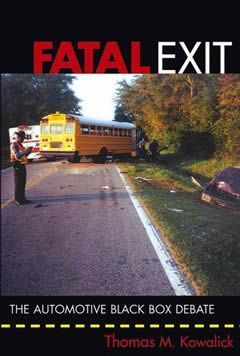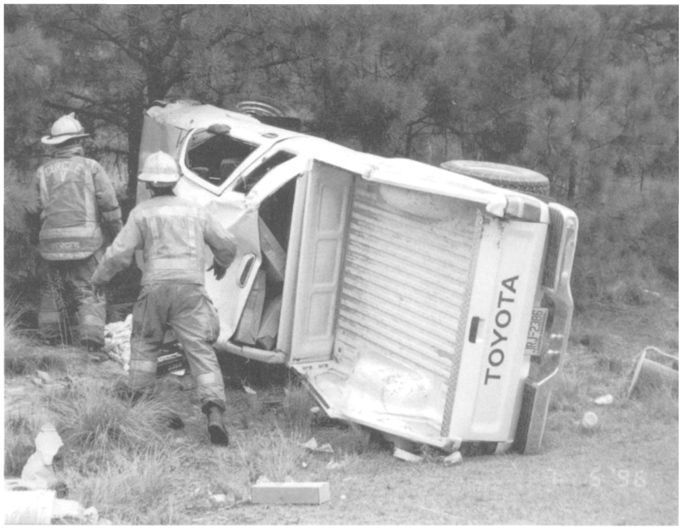I could not have generated the information, collected the photographs, or completed the project without the assistance and aid of others. I want to thank all of those who contributed to the successful completion of this book. My first debt is, of course, to my three amazing children who encouraged me to discover my writing purpose and pursue it with intense passion and perseverance. I am grateful that they understood the world must know this story. I am deeply grateful to my friend Mohsin Ali, former diplomatic editor for Reuters, who helped tremendously by serving as a guest lecturer to my college classes while I attended the many meetings. The hundreds of college students who participated in the research and surveys helped to get this book written. Unfortunately, some of these students perished in motor vehicle crashes. Many others were involved in crashes that caused them pain and injury. It was common to hear tragic stories on a daily basis. I constantly thank my college students and remind them that their involvement was important. What is written is never forgotten. I tell them that we learn more from our mistakes than from our successes. Hopefully, in this second century of motor vehicle travel, these students can experience the freedom to travel safely. I received much support and advice, and sometimes the best advice came from the naysayers who told me I was wasting my time. Fortunately, I turned all their negatives into positives. Many individuals are mentioned within, but this book is solely my project and all of the opinions expressed here (except for the direct quotations) are my own. I do not speak or write for the automakers, government safety establishment, standards development organizations, or advocates—but I do include their own works in my book and also what others have commented about them. I do not bash any group for all are important and I am very careful to be factual. I express my grateful appreciation to those who gave permission to use news articles and extended quotations such as the National Academies of Sciences / Transportation Research Board (TRB), the New York Times, Automotive News and EE Times, the World Health Organization (WHO) and the World Bank. Robert Kern, my literary agent in Chapel Hill, North Carolina and Cathy Faduska, my senior editor at IEEE Press / John Wiley & Sons, Inc. and Kay Ethier of Bright Path Solutions, Durham, North Carolina, helped craft the initial structure of my manuscript and greatly improved the book. The entire point of an editor is to decide what is and what is not fit to print, and any book will have some selection criteria. Those criteria and the editor's judgment are its bias. The best that any author can do is make it as clear as possible why everything should be included so as to avoid "unbiased" reporting where no one can be portrayed as being wrong or opposing safety. No courage is required to publish a sanitized, non-critical version of events. To do otherwise requires a higher standard. Vehicle and highway safety cannot be accomplished through the efforts of one person, a group, or a government agency. It is a shared responsibility among people who travel, the companies that provide transport, and the agencies that regulate travel. But, one person can make a difference toward the goal of safe travel. Someday, when we are "actually all safer" while traveling in crash-proof vehicles on intelligent highways, I want to tell my children's children that I knew about this problem and did my best to erase it when I could. I will tell them in life we have two choices, try or do nothing. To me it was impossible to witness the terrible pain and suffering and not get involved. Road safety is no accident. Silence is the ultimate weapon of power in vehicle and highway safety. This book will break that silence. |
Chapter 2 - Nothing Happens for the First Time: 1969-1998
The first attempt to introduce automotive black boxes was between 1974 and 1998. It was a dead end. MaryJo Kopechne died in an infamous late-night incident on Chappaquiddick Island, Massachusetts. Kopechne was in the passenger seat on 18 July 1969, when a car driven by Senator Edward Kennedy flipped off the Dike Bridge and into a large pond. Kopechne was trapped in the car and died at the scene. Kennedy escaped, but his failure to report the crash until the next morning led to a public scandal that scuttled his plans to run for president in 1972. I sometimes wonder if Senator Edward M. Kennedy had his radio blaring that hot July night in 1969, when he drove off Chappaquiddick Bridge. If the radio was on, then it's possible that he could have heard Bob Dylan sing Blowin' in the Wind.1 In that classic tune, Dylan asked, "How many years can a man turn his head, pretending he just doesn't see?" Maybe Kennedy did have his radio on that night, and maybe he didn't. As with nearly everything else connected with that controversial crash, the evidence is lacking - still blowing in the wind. One thing is for sure: Kennedy survived the crash and the political aftershocks. As he was chauffeured around Washington, the Honorable Edward M. Kennedy served as Chairman of the Technology Assessment Board in 1975. The Technology Assessment Board was then being asked to evaluate the automotive crash recorder program proposed by the National Highway Traffic Safety Administration (NHTSA). How ironic for Senator Kennedy to have been integrally involved in assessing a possible solution for one of the most urgent problems of our time: motor vehicle related injury and death. The Office of Technology Assessment (OTA)2 was created by the Technology Assessment Act of 1972 (2 U.S.C. 472) to serve the United States Congress by providing objective analyses of major public policy issues related to scientific and technological change. The Technology Assessment Advisory Council comprises 10 public members eminent in science and technology. The Council is appointed by the Board and advises the Board and OTA on assessments and other matters. The Office's assessments explore complex issues involving science and technology, helping Congress resolve uncertainties and conflicting claims, identifying alternative policy options, and providing foresight or early alert to new developments that could have important implications for future Federal policy. Each project is guided by an advisory panel of experts on a particular subject as a way of ensuring that reports are objective, fair, and authoritative. After approval for release by the Board, OTA assessment reports are distributed to the requesting committees, with summaries provided to all Members of Congress. The reports are available to the public through the Government Printing Office. On November 19, 1974, Chairman Kennedy received a letter sent by George H. Mahon, Chairman of the U.S. House of Representatives Committee on Appropriations on behalf of Congressman John J. McFall, Chairman of the Transportation Subcommittee, and Congressman Silvio O. Conte, the Subcommittee's Ranking Minority Member transmitting the attached request for a technology assessment with regard to automobile crash recorders.3 Chairman Kennedy received his letter because an earlier Conference Report to H. R. 15405 (Department of Transportation and Related Agencies Appropriations Bill, 1975) stated that:
Although the committees of both Houses have heard extensive testimony on this program over the past three years, substantial questions and differences still existed on the necessity for gathering additional information through the installation and monitoring of the requested crash recorders. Since the issue remained unsolved, the Conference Committee on H.R. 15405 decided to call upon the OTA for assistance. The objective was to undertake a study of the need for and means to assemble detailed data on actual automobile collisions so as to develop realistic automobile design standards.6 The study examined the desirability, utility, design and cost of crash recorders and of the alternate approaches to collecting crash data, including computer crash simulation, controlled laboratory crashes and their correlation with observed vehicle deformations, and methods to improve the accuracy of crash investigation reporting and to increase the utility of national crash data files. Specific data collection programs previously proposed to Congress by the NHTSA were studied and evaluated. |
 One of the great pleasures of finishing a book is that it gives the author the opportunity to thank those who helped make the project a product.
One of the great pleasures of finishing a book is that it gives the author the opportunity to thank those who helped make the project a product. TABLE OF CONTENTS
TABLE OF CONTENTS 






